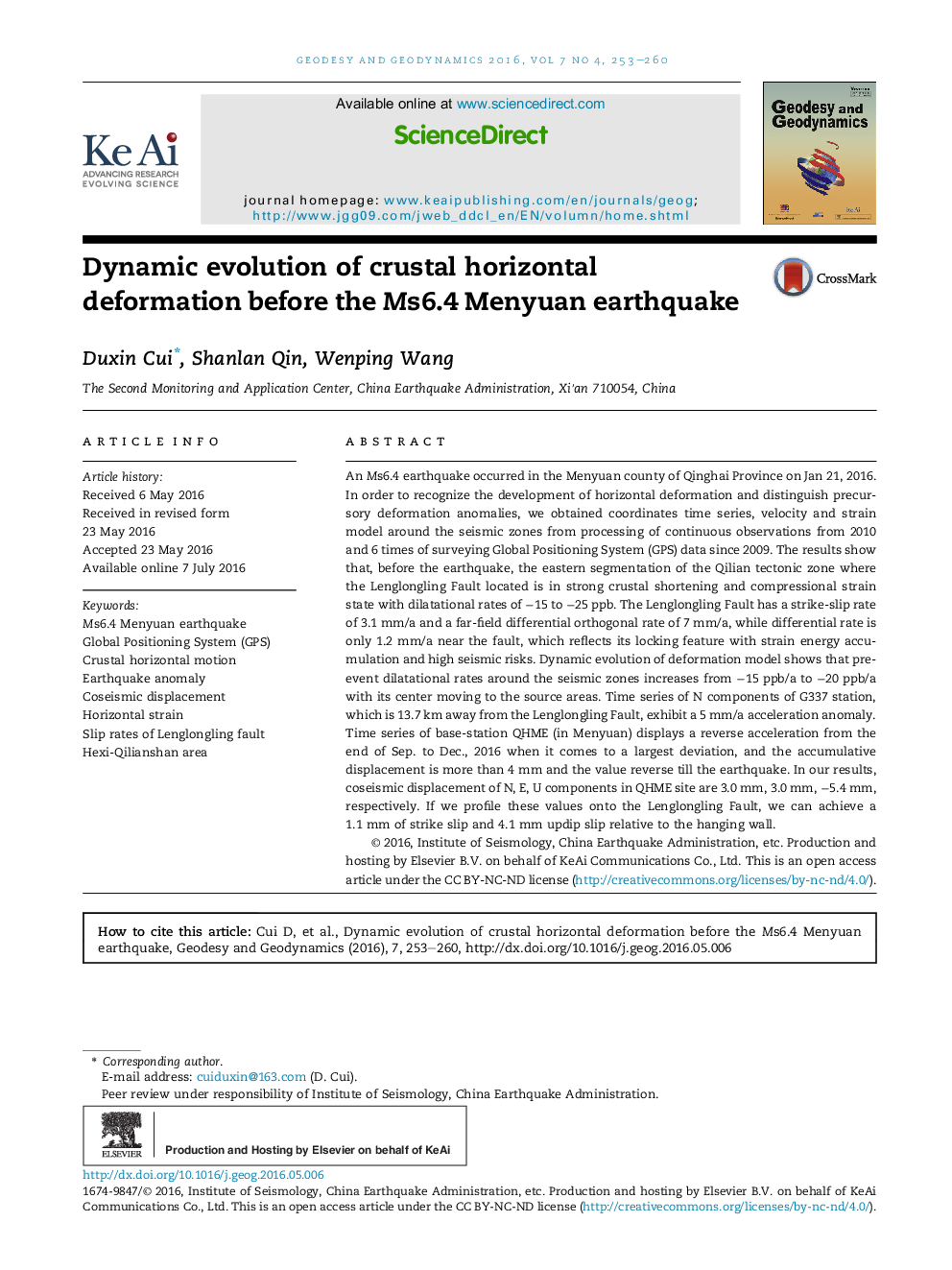| کد مقاله | کد نشریه | سال انتشار | مقاله انگلیسی | نسخه تمام متن |
|---|---|---|---|---|
| 4683492 | 1349314 | 2016 | 8 صفحه PDF | دانلود رایگان |

An Ms6.4 earthquake occurred in the Menyuan county of Qinghai Province on Jan 21, 2016. In order to recognize the development of horizontal deformation and distinguish precursory deformation anomalies, we obtained coordinates time series, velocity and strain model around the seismic zones from processing of continuous observations from 2010 and 6 times of surveying Global Positioning System (GPS) data since 2009. The results show that, before the earthquake, the eastern segmentation of the Qilian tectonic zone where the Lenglongling Fault located is in strong crustal shortening and compressional strain state with dilatational rates of −15 to −25 ppb. The Lenglongling Fault has a strike-slip rate of 3.1 mm/a and a far-field differential orthogonal rate of 7 mm/a, while differential rate is only 1.2 mm/a near the fault, which reflects its locking feature with strain energy accumulation and high seismic risks. Dynamic evolution of deformation model shows that pre-event dilatational rates around the seismic zones increases from −15 ppb/a to −20 ppb/a with its center moving to the source areas. Time series of N components of G337 station, which is 13.7 km away from the Lenglongling Fault, exhibit a 5 mm/a acceleration anomaly. Time series of base-station QHME (in Menyuan) displays a reverse acceleration from the end of Sep. to Dec., 2016 when it comes to a largest deviation, and the accumulative displacement is more than 4 mm and the value reverse till the earthquake. In our results, coseismic displacement of N, E, U components in QHME site are 3.0 mm, 3.0 mm, −5.4 mm, respectively. If we profile these values onto the Lenglongling Fault, we can achieve a 1.1 mm of strike slip and 4.1 mm updip slip relative to the hanging wall.
Journal: Geodesy and Geodynamics - Volume 7, Issue 4, July 2016, Pages 253–260